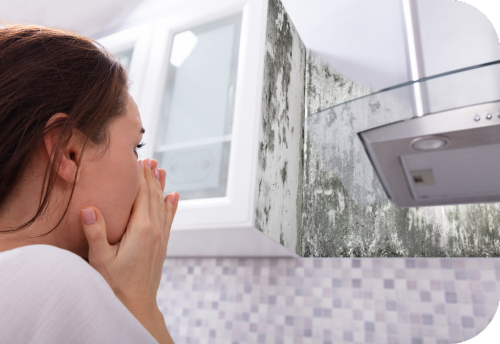Thinking of buying or selling a home? The last thing you probably want to think of is mold. As you’ll learn though, mold problems are serious. While it may be true that “ignorance is bliss” in many areas of life, you do not want to avoid home problems that can negatively impact your health.
Like it or not, mold issues are only increasing. Being aware of what this may or may not mean to you and your loved ones is critical. For example, did you know that mildew is mold in its early stages? It’s fairly common for people to think that mildew is something harmless that can just be wiped away.
You might be able to wipe just a little mold away and wash it down the drain or throw the paper towel in the basket with little concern. For a growing number, however, a little mold adds up to big trouble. With this in-depth resource, you will discover signs of mold, what you should be on the lookout for, and what symptoms you may experience that can flag when mold is in your house.
Did you know that both mildew and mold can develop within 24-48 hours of water damage? Some people have become sensitized to it. That means that they don’t easily recover from symptoms and that smaller amounts of the things that caused a reaction make them feel worse faster.
It’s essential to understand that mildew and mold will continue growing until the source of moisture and the mold is addressed. While you can handle some of these cleanup jobs yourself, there are some you should not tackle due to asthma and allergies, or mold sensitization in family members.
Mold contains microscopic spores that contain mycotoxins, which can make people sick. When disturbed, these spores can easily spread throughout the home due to air management systems. The problems that can develop may remain invisible for a long time until circumstances are right for them to appear.
Some of the symptoms of mold and mold allergies within your home you may experience are:
These symptoms will vary from person to person, and that is one of the most frustrating things about mold. Pay attention to how you feel, and take action accordingly.
One thing you won’t generally miss when it comes to spotting signs of mold in the house is musty odors, which indicate moisture. They are often a dead giveaway that mold is present. Mold needs both moisture and a food source to spread. It can spread if enough dust is present, because dust contains a number of organic particulates such as dead skin, pet dander, bits of feathers, and fecal matter from dust mites.
You’ll want to figure out where the moisture is coming from. You may be able to handle the problem yourself, or you may want professional assistance. If a significant amount of water has been standing for over 24 hours, and if mold is present, it is strongly recommended that you use a professional remediation company. Because of the toxins involved in a cleanup like this, it must be done with containment.
One thing you won’t always notice is the various visuals that indicate the presence of mold. While some of them won’t surprise you, such as black spots on carpet and rotting wood, others are not so obvious and may surprise you. Be wary of the following when buying a home:
Make sure you look up when going through a house looking for problems. You may not always be able to sense or smell them, but often you can see them if you know what to look for.
If you’re in an unfinished basement, and the stairs have a fresh coat of paint, that is cause for concern. Basement water will leave a line on wooden stairs, and some in-the-know homeowners will paint over them to make selling their home easier.
Do you see a series of lines on unfinished or painted walls, or Sheetrock indicating that water has been present? You’ll want to get more information on that. What happened and when? Where did the problem start, and how was it fixed? You’ll want to look behind sheet rock for the presence of mold in wood and insulation.
This is a huge red flag on the exterior of a home that there is water damage on the inside. In addition, some materials used in home construction, such as chipboard, are terrific food sources for mold (e.g. wood chips and glue). You’ll want to look for the presence or absence of waterproof house wrap underneath the siding. There’s no way to tell whether there is a little or a lot of damage until you know more.
Now that you know what the signs of mold are, and have a general overview, here are some other resources that may be helpful in your research:
Green Clean is a certified, locally owned cleaning and restoration service serving the Twin Cities metro area. Our Minnesota-based experts are happy to answer questions about carpet cleaning, water damage restoration or odor removal at any time. Contact us for more information or to schedule service. For all health-related concerns, please contact your physician.
Like us on Facebook
The information contained within this article is for educational and informational purposes only and should not be construed as advice or any claim promising a particular outcome. You should perform your own independent analysis to verify the accuracy of any information provided.
Prev: Why You Should Avoid DIY Water Damage Restoration.Next: Water Damage from a Fire Sprinkler System: Get Professional Help Right AwayView All Resources